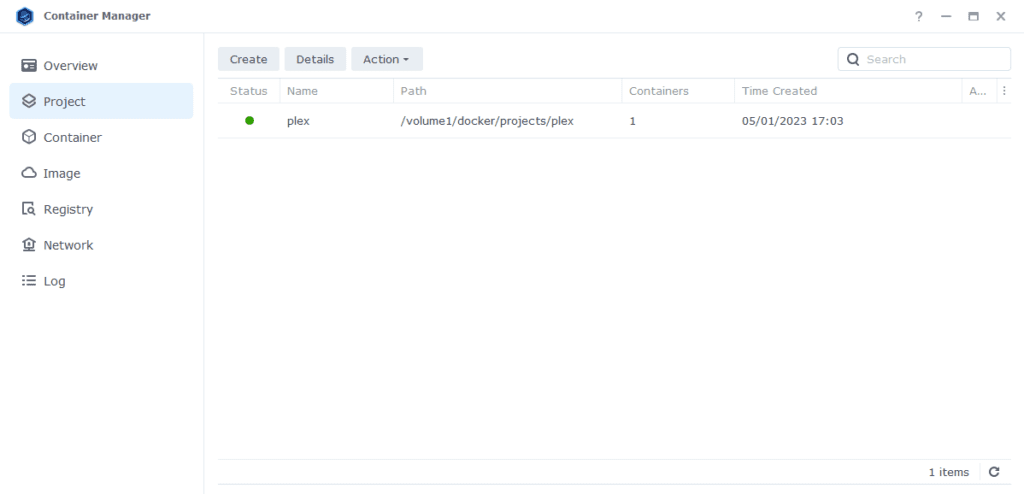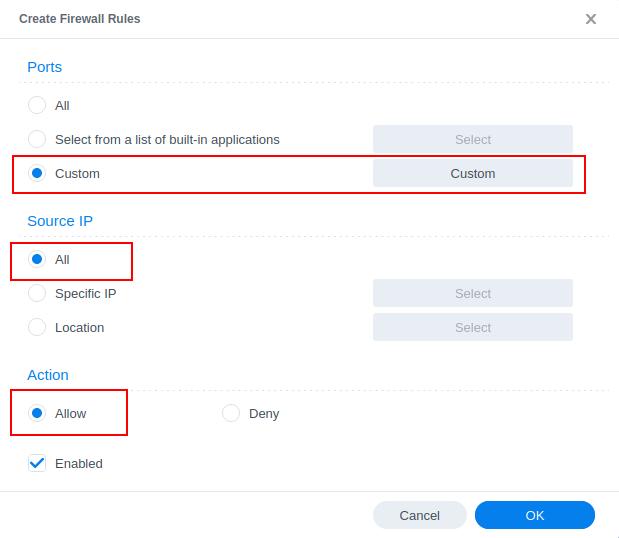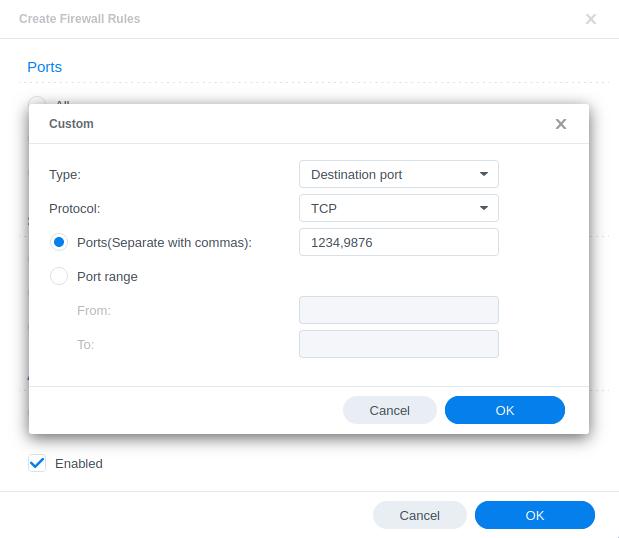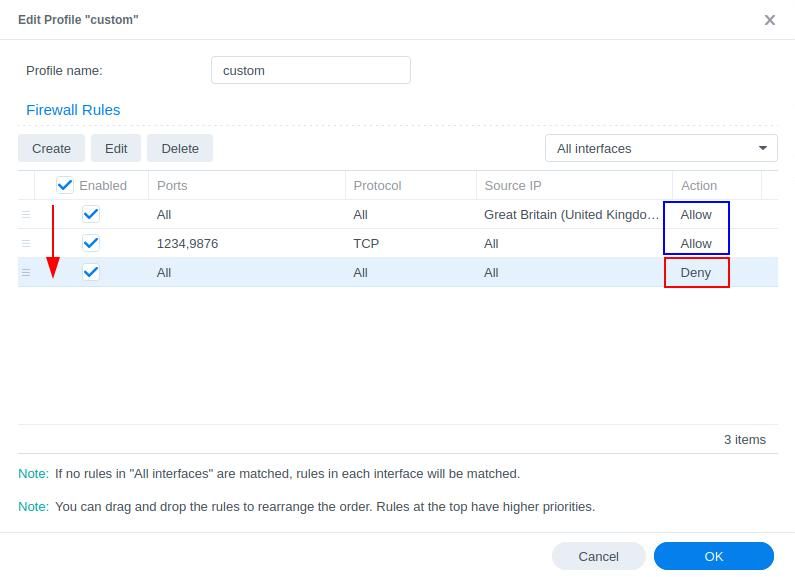Important or Recent Updates
| Historic Updates | Date |
|---|---|
| New DSM7.2 Container Manager Update | 01/05/2023 |
| Guide rewritten moving to a Project rather than the slower method via the UI giving you more flexibility. Also includes updates to improve security which is only possible via projects. | 25/10/2023 |
In this guide I am going to take you through the setup of Plex in Container Manager.
This version of the guide does not enable the hardware transcoding features of your NAS, if it supports it I recommend following the other version from the menu (That version tells you how to check)
If you NAS does not support it, or you do not have a Plex Pass continue on below
Let’s Begin
In order to use this guide successfully you will need to complete the two preceding guides which will get your folder structure and Docker, user setup. In addition, if you already have the original Synology Plex Package installed you will need to uninstall it first.
Folder Setup
Let’s start by getting some folders set up for the container to use. Open up File Station create the following.
/docker/projects/plex-compose
/docker/plex
Container Manager
Next we are going to set up a ‘Project’ in Container Manager. Open up Container Manager and click on Project then on the right-hand side click ‘Create’.

In the next screen we will set up our General Settings, enter the following:
| Section | Setting |
|---|---|
| Project Name: | plex |
| Path: | /docker/projects/plex-compose |
| Source: | Create docker-compose.yml |
Next we are going to drop in our docker compose configuration copy all the code in the box below and paste it into line ‘1’ just like the screenshot.
What on earth is a Docker Compose? Docker Compose allows us to define how Docker should set up one or more containers within a single configuration file. This file is yaml formatted and Container Manager uses the Projects feature to manage them.

services:
plex:
image: linuxserver/plex
container_name: plex
network_mode: host
environment:
- PUID=1234 #CHANGE_TO_YOUR_UID
- PGID=65432 #CHANGE_TO_YOUR_GID
- TZ=Europe/London #CHANGE_TO_YOUR_TZ
- UMASK=022
- VERSION=latest
- PLEX_CLAIM=
volumes:
- /volume1/docker/plex:/config
- /volume1/data/media:/data/media
security_opt:
- no-new-privileges:true
restart: unless-stoppedA note on Network Mode
You will notice that for Plex we don’t put it on the normal bridge network, this is because DSM reserves the DLNA ports Plex requires in order to use DLNA. So we run in Host mode, so it can share the ports.
Environment Variables
We need to make some changes in order for the container to have the correct permissions to save its configuration files and to have access to your media.
| Variable | Value |
|---|---|
| PUID | (required) The UID you obtained in the user setup guide |
| PGID | (required) The GID you obtained in the user setup guide |
| TZ | (required) Your timezone wikipedia.org/wiki/List_of_tz_database_time_zones |
| PLEX_CLAIM | Please note the PLEX_CLAIM variable is optional and not always required. You can remove this line if you don’t need it or come back and add it if you are unable to sign in to your server on start up. To get the code go to https://plex.tv/claim and sign in, then put the code you receive after the ‘PLEX_CLAIM=’. You have 4 mins to finish the guide after doing this, so best to grab it just before running the project. |
Volumes
I have pre-filled this section to pass the correct paths, the only thing that you may need to change is the /volume1/ if your file paths are on a different volume.
Click ‘Next’
You do not need to enable anything on the ‘Web portal settings’ screen click ‘Next’ again.

On the final screen click ‘Done’ which will begin the download of the container images and once downloaded they will be launched!

The image will now be downloaded and extracted. You should see ‘Code 0’ when it has finished.

You will now see your Plex running and should have a green status on the left-hand side.

Firewall Exceptions
(Skip if you don’t have the Firewall configured)
If you have enabled and configured the Synology Firewall you will need to create exceptions for any containers that have a Web UI or have any incoming or outgoing connections. This section covers the basics of how to add these. (Please note this is a generic section and will not show the specific ports used in this guide however it applies in the same way)
Also, I would like to refer people to the great guide on getting the Firewall correctly configured over on WunderTechs site.

Head into the Control Panel> Security > Firewall, from here click Edit Rules for the profile you set up when you enabled the Firewall.

Next click on Create and you will see the screen below. Source IP and Action will be automatically selected to All and Allow, I will leave it up to you as to your own preference on whether you want to lock down specific Source IPs from having access. In this example we will leave as All.

You will now choose ‘Custom‘ and then the Custom button
Now select Destination from the drop-down menu, most web based containers require TCP access but check the guide as it will show the port and protocol. Then add comma separated ports. Then press OK.

Click OK a couple of times to get back to the main screen. You will see by default the new rule is added to the bottom of the list. You must always have your Block All rule last in the list as the rules are applied top down so move your container up.

You have now completed the Firewall changes and can continue with the guide.
Initial Plex Setup
After a few minutes you should be able to access the server and go through the Plex setup by going to the IP of your NAS in your browser followed by port 32400/web/
e.g. 192.168.0.45:32400/web/
You will be asked to sign in or sign up for an account if you don’t have one already.

You should now be able to add your media which will be in the /data folder within Plex

That’s it you are all setup. When a new server update is available you will just need to restart the container, and it will automatically download the latest update.
Buy Me a Coffee or a Beer
If you have found my site useful please consider pinging me a tip as it helps cover the cost of running things or just lets me get the odd beverage. Plus 10% goes to the devs of the apps I do guides for every year.



Hi, I’m having a bit of difficulty getting the Plex Server up after following instructions.
I got to added the data folder, but doesn’t seem to load the film I uploaded onto there. Also when I expand the data folder from the Plex server, I can see the media folder, but not the subfolders for movies/tv/music.
I’ve also gave the System Internal User – PlexMediaServer read/write permissions, but no luck. Would you happen to know what else I could do to see the files/subfolders in the data shared folder?
It sounds like you still have the Plex package installed as well as the container version, you will need to remove the Package in order to use the Container version. You are likely in the package when attempting to add the files.